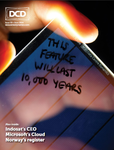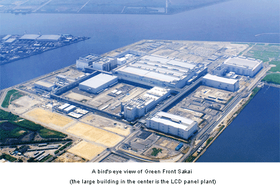More than 100 years is a long time for a company to stick around, so it’s no surprise that travel company TUI has been through quite a few transformations since it was founded in 1923.
One of the biggest is arguably the most obvious. Formerly known as Preussag AG, a transportation and industrial business, its shift into the service and leisure industry in the 1990s - and subsequent rebranding as TUI in 2002 - was quite the dramatic metamorphosis.
Nowadays, Germany-based TUI offers package holidays, experiences, and cruises to customers across Europe.
Its transformations in recent years have been less blatant to the outside world, focusing on digital transformation and modernizing the company’s IT footprint. Though, according to CIO Pieter Jordaan, considering “transformations” as individual processes is foolish. “I think there’s a fallacy that transformations have a start and an end,” Jordaan says. “Really, it's a snapshot of time because of certain technology disruptions.”
Despite this, Jordaan is happy to break the changes down into phases when talking to DCD. “Our early transformation, up until 2017, was just consolidation,” he explains. “It was moving all of our countries’ data onto single platforms. “We grew through acquisitions - so we would buy a company that had its own platform, database, and multiple ERP and finance systems. Eventually, this becomes prohibitively complex and you need to constantly consolidate that as a matter of survival.”
He is not joking. A brief look through TUI’s history shows a complex series of mergers, acquisitions, divestments, and investments since the turn of the century. In addition, though based in Germany, the company serves 15 countries, adding to the complexity of consolidation, offering charter and scheduled passenger flights, package holidays, and cruises.
Beyond consolidation, TUI was migrating to the cloud - Amazon Web Services (AWS), specifically.
“If you look at cloud computing, and when AWS emerged on the scene, even when they started it seemed like they did everything. What that has done is lowered the barrier of entry for companies to innovate,” says Jordaan, speaking to DCD at AWS’s London summit.
“In the past you would have had to spend millions to set up your kit, to have all the compute available before you can start. Now, if you are a software startup, you could even be in a broom closet and still have access to the same compute that we [TUI] have as a €20bn ($21.7bn) company.”
Prior to its cloud migration, TUI was spending around 60 percent of its capital on networking, infrastructure, and pipelines for data. For Jordaan, it makes much more sense to let AWS and other cloud providers invest in innovation, while TUI cashes in on the convenience of the service.
The company has opted to steer clear of a ‘multi-cloud’ approach involving several different vendors, instead going all-in with AWS. Many businesses opt for a multi-cloud approach to avoid vendor lock-in, but Jordaan feels this concern belongs in the past.
“You’re trying to mitigate the risks of if you have to move but, in reality, the lifespan of most software is maybe five years,” he says. “You won’t migrate it anyway, you’ll just rewrite it. So the cost of running multi-cloud versus just writing it new is a significant difference.
“I think that's why people are stopping trying to build multi-cloud, or multi-cloud or on-prem and cloud set-ups, because the cost-benefit analysis doesn't make sense.”
Other tech leaders do not seem to share Jordaan’s view. The vast majority of companies still take either a hybrid approach or a multi-cloud approach for their IT strategy, if they are not fully on-prem. Perhaps this choice is just hedging on the “safer” side, but, regardless, TUI seems set on an ultimate goal of being (almost) all in AWS.
Unsurprisingly, despite being a cloud-first (and AWS loyalist) company, TUI still has some on-premise capacity. According to Jordaan, earlier on in the company’s journey, it had more than 30 data centers. Now it operates just 11, with plans to continue reducing that number this year.
Describing the migration process so far, Jordaan says that they started with some of the very critical systems. “One of which was the e-commerce system that runs 50 percent of our revenue,” he says. “That was significant, and provided scalability, because we could add more countries into it, and there are events such as airlines that cancel flights and so our customers would suddenly be looking for bookings.”
After that, it was a long-running program of lifting and shifting workloads depending on their priority. The remaining data centers are either “just really complicated” to decommission, or are in the process of being shut down. By the end of next year, Jordaan expects TUI to have just one or two data centers.
One of the more unique areas of TUI’s business from an IT perspective is that of the cruise ships. “Cruise ships actually have a whole data center on board,” Jordaan says. “It has completely separate networks for the onboard systems, navigation systems, and everything else, because you're in the middle of the sea. You need all the compute, storage, and networks to run from a data center.”
These systems are being transformed, too. Ships are deploying satellite connectivity to bring greater Internet connectivity on board. TUI is currently deploying Starlink on its cruise liners which, according to Jordaan, is enabling them to reduce the compute on board as well as improving Internet connection for holidaygoers.
Overall, the company’s technical transformation really ramped up during the Covid-19 pandemic. With holidays out of the question as countries around the world went into lockdown, TUI was forced to take an operational break. For once, people weren’t using its services 24/7, so what better time to modernize?
That said, TUI was also, in some ways, on the front lines of the pandemic. DCD asked Jordaan if he remembered what the energy in its offices was like when the situation began to unfold. “We aren't strangers to extraordinary events,” says Jordaan after a pause. “We have a crisis center to handle these things - be it hurricanes, volcanic eruptions, or even terrorist attacks. We have very strong crisis management abilities, but what made Covid-19 complicated was that it was a crisis in every single country at once.”
In the immediate aftermath, TUI had to locate and repatriate all of its customers who needed help getting home. That meant coordinating the company’s own planes and sending them across the globe out of schedule, and during a “very volatile period where some countries are closing their airspace.”
Jordaan added that some of TUI’s ships were refused permission to get into harbors or ports. TUI had to send out eight airplanes just to rescue those passengers. While, of course, a hectic and strenuous time, being a package holiday provider and having an already consolidated and strong IT setup meant that TUI knew where its customers were stranded, and could get all 200 of them back home safely.
In addition to the physical safety and well-being of TUI’s customers, the second concern was financial. Very few companies escaped the cost of the pandemic, and the travel sector was among those hit particularly hard.
“No one knew how long it would last. Would it be three months? A year? Everyone was, of course, hoping it would be short, but the difficulty was on the revenue side,” says Jordaan. “Maintaining airplanes that aren’t flying for long periods of time isn’t cheap. The planes are still costing you money. You can’t shut down hotels indefinitely, because you will have mold and other issues. Fundamentally, your asset base is costing you money.”
TUI saw significant financial hits to its bottom line. Its 2020 revenue was €8bn ($8.7bn), a 58 percent decrease on the previous year, and the German state gave the company €3bn ($3.3bn) in financial support to soften the blow. Despite this, it was also the company’s first opportunity to go hard on its IT modernization efforts, cloud migration, and begin putting in the groundwork for future artificial intelligence (AI) solutions.
During its Q4 2020 earnings call, TUI noted that the company had been able to modernize much faster than it may otherwise have because of the reduced traffic - “the migration to the new architecture is easier."
Jordaan expands on this: “We were already on a transformation journey. We were already consolidating countries into regions of data stacks or data centers. But it’s a hugely iterative process and it’s made worlds more complicated if you are busy flying planes, sailing cruise ships, and selling millions of holidays. It makes it very hard to switch systems.
“Covid gave us an opportunity where planes were grounded, so the risk appetite changed from ‘please don't touch anything' to 'please do it as quickly as possible.’ It’s not a risky thing, it’s a prudent thing. The risky part is when you aren’t finished and things start up again.”
When it comes to AI, Jordaan says that, within one year, the company increased its model deployment and Amazon SageMaker use by 1,000 percent and, in 2023, launched an “AI Lab” to bring generative AI throughout the company.
The initial focus for AI within the company is on efficiency - “How do I make my core center better? How do I get my developers to code faster?” Beyond that, the AI will be used a touch more creatively.
“If you talk to your friend who had a great experience on a holiday, they don’t tell you the pool was 200 meters away from the hotel and the restaurant opened at 6pm. They tell you that the staff were friendly, and the vibe was good. They tell you about how they went up a mountain, and the hotel provided lunch for the trip,” explains Jordaan. “These are data points that are hard to measure but super important to us as humans, and they are how we make decisions.”
Here, Jordaan sees AI changing the vacation experience. Instead of the very quantitative and “crude” star method of rating, the AI will be able to make recommendations based on what an individual wants from their holiday - be it a party scene, a quiet location, or something family-friendly.
“The decision is very emotional. It's based on all the parameters that are important to you, and you can use language to describe that,” he says.
Thus far, TUI has been able to use AI to scale its online content designed to “inspire” customers into purchasing holidays. How long it will be before AI is actually planning our holidays is hard to say, but for TUI, its increased use of automation comes as the company emerges from the deep end of the pandemic.
In its latest earnings call, the company declared it was back on track with holiday bookings, with 60 percent of summer bookings already made.
Thankfully, TUI completed enough of its cloud migration before the airplanes took flight again.






